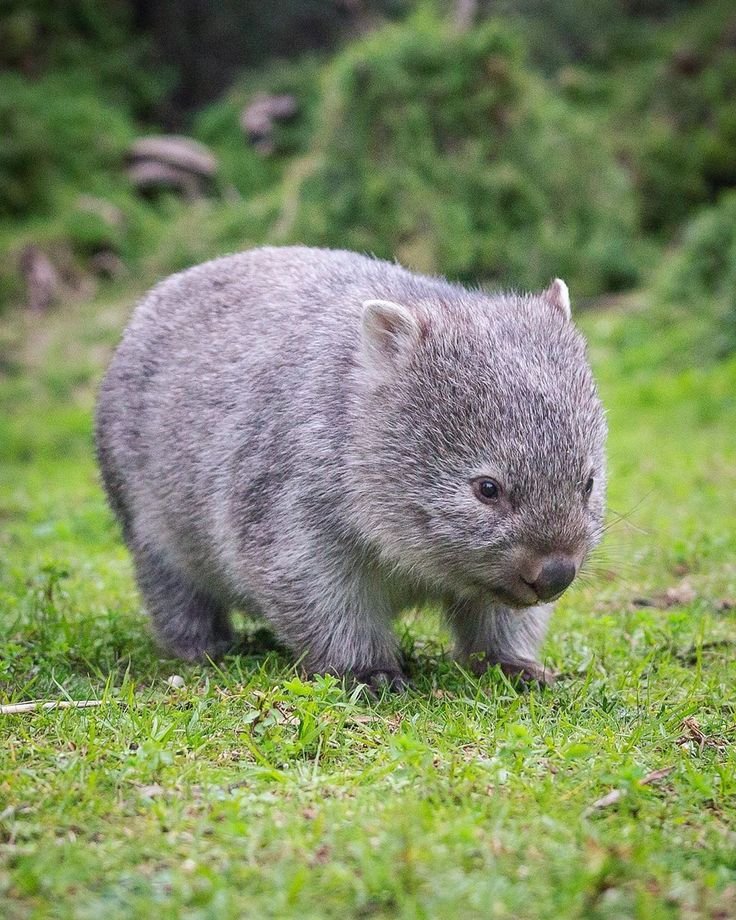
You might be wondering why understanding wombat behavior matters. Well, knowing how to interact with wildlife not only enhances your adventure but also promotes the well-being of the animals. It’s all about finding that balance between enjoying nature and respecting the natural world. So, what should you do if you spot a wombat on your trek? Let’s dive into the dos and don’ts of wombat-watching.
Understanding Wombat Behavior
Before you can really appreciate a wombat encounter, it’s helpful to understand a little bit about these marsupials. Wombats are primarily nocturnal, meaning they’re most active at night. During the day, they tend to be reclusive, hiding in their burrows to escape the heat. So, if you see one during daylight hours, it might either be on the hunt for food or feeling a bit bold.
Wombats communicate through scent markings, much like how a dog might leave its mark. They have strong territorial instincts, so if you get too close to their home, you might notice them huffing. This is their way of letting you know they’re not thrilled about your presence. You could think of it as their version of a warning sign.
Stay Calm and Observant
If you’re lucky enough to spot a wombat, the first thing to remember is to stay calm. Wombats can sense your energy. If you’re excited or anxious, they might respond by retreating into their burrow. Instead, take a moment to breathe and **observe**. Watch how the wombat moves and interacts with its surroundings.
You might notice it grazing on grass or digging up roots. Try to keep your distance—around 30 meters is a good rule of thumb. This buffer zone allows you to enjoy the moment without causing the wombat any stress. Think of yourself as a silent audience to a beautiful natural performance.
Respect Their Space
Respecting a wombat’s space is crucial. These animals are solitary by nature and appreciate their alone time. If a wombat seems hesitant or starts to walk away, don’t chase after it. Instead, let it go about its day undisturbed. Remember, you’re in their territory, and you need to allow them the choice to engage or retreat.
Don’t feed wombats, either. While it might seem cute to offer a snack, feeding wildlife disrupts their natural foraging habits and can lead to health issues. Plus, it might make wombats more comfortable around humans, which isn’t good for their overall well-being. Imagine if a stranger kept showing up with food; it could lead to some awkward encounters!
Using Your Camera Wisely
Caught in the moment and want to snap a few pictures? Great! Just remember some ground rules. First, use **natural light** to your advantage. Early morning or late afternoon provides the best lighting for beautiful photos. Make sure your camera settings are ready before you arrive at the viewing spot so you don’t miss a chance for a great shot.
When photographing a wombat, avoid using a flash. The sudden brightness can startle them, causing stress. Instead, try to capture the essence of the moment without intruding. The goal is to document the encounter, not to dominate it.
Know When to Leave
Another key aspect of wombat encounters is knowing when it’s time to leave. If the wombat seems uncomfortable or agitated—like huffing, foot stomping, or moving away—it’s best to step back. Leaving the area allows the wombat to feel safe again and return to its normal routine.
Here’s the thing: wildlife encounters should be enjoyable for both you and the animal. If you’re starting to feel intrusive or if you sense the wombat is stressed, trust your instincts. As a responsible wildlife enthusiast, recognizing this is part of the experience.
Stay Informed and Prepared
Before heading out, it’s a good idea to learn about the specific area you’re visiting. Some locations have specific rules and guidelines for wildlife. Familiarizing yourself with these can enhance your experience and ensure you’re acting appropriately.
Bring a few essentials to make your encounter more enjoyable. A pair of binoculars can help you get a better view of the wombat without getting too close. Also, having a field guide can provide more context on what you’re seeing in real-time. Being prepared shows respect to the environment and its inhabitants.
Encountering a wombat in the wild is truly a special experience. By understanding their behavior, respecting their space, and being prepared, you can appreciate these charming creatures without imposing on their lives. Remember, the goal is to foster a sense of wonder while keeping wildlife safe and undisturbed.
So, next time you venture into the bush, keep these tips in mind. You never know—you might just spot a wombat, feeling bold and curious. Let that moment unfold naturally, and you’ll walk away with memories that will last a lifetime and a little more knowledge about the awesome creatures we share this planet with.

